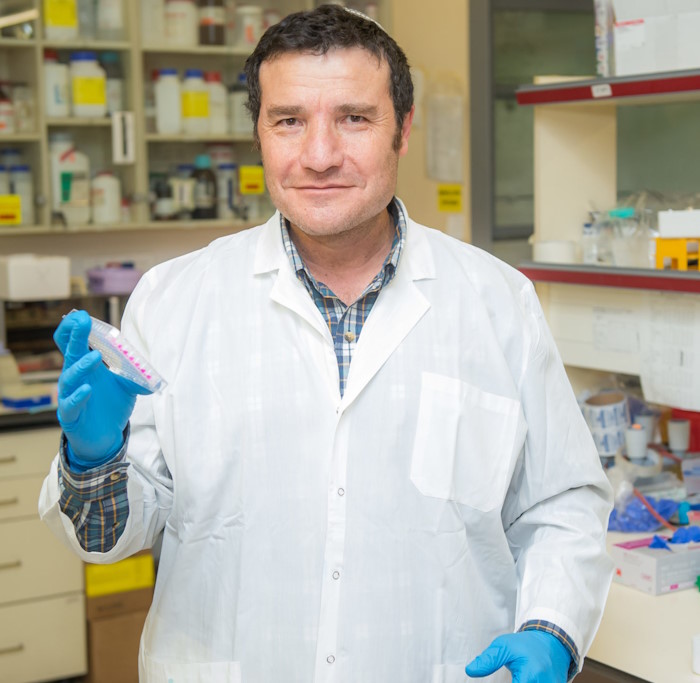Professor Haim Cohen
Haim Cohen, Ph.D. is the Director of the National Metabolic Center for Excellence in Scientific Research in Human Diseases, head of the Molecular Mechanism of Aging Laboratory, and Full Professor at the Mina and Everard Goodman Faculty of Life Sciences at Bar-Ilan University.
The National Metabolic Center for Excellence in Scientific Research in Human Diseases is part of Israel’s National I-Core Initiative, which partners Bar-Ilan University, Hebrew University, and Tel Aviv University with the Sheba Medical Center at Tel HaShomer and Hadassah Medical Centers.
Haim also heads the Israeli-German Minerva Center for Biological Mechanisms of Healthy Aging and the Sami and Tova Sagol Center for Human Healthy Longevity Signature (HEALS), both hosted at his Lab.
Haim is the Principle Investigator at Haim Cohen’s Lab for the Molecular Mechanisms of Aging where they explore the basic biological mechanisms underlying aging. They search for new approaches to delay and prevent aging-associated diseases, particularly metabolic dysfunctions.
Using human tissue cultures, sophisticated mouse models, and big data analyses, they merge molecular and cellular biology, large-scale multi–omics analyses of RNA-sequencing, proteomics, metabolomics, and posttranslational modification profiling along with bioinformatics analyses.
Particularly, they focus on the NAD+ dependent deacetylase and sirtuin 6 (SIRT6), a key enzyme and regulator of longevity, which mediates the positive effect of calorie restriction on healthy life expectancy. They have shown that enhancing SIRT6 activity increases healthy lifespan and protects against age-related metabolic diseases, genome instability, inflammation, cancer, and cognitive decline. Haim and his team have shown that increasing SIRT6 activity can extend life by 30–40% and prevent the harmful effects of obesity and old age.
Initially pursuing biology courses to become a veterinarian, Haim then joined a summer research program at the Weizmann Institute, changing his life and career trajectory. In the last year of his Ph.D. program, Haim read Dr. David Sinclair and Dr. Lenny Guarantee’s groundbreaking paper on how a gene found in yeast cells can impact aging.
Haim was inspired to join Dr. David Sinclair’s lab, describing the experience as, “Feeling like a pioneer at the beginning of the sirtuin field.” After researching other sirtuins, Haim started to work on SIRT6. He found that caloric restriction was associated with increased SIRT6, and this was just the beginning.
Read Recombination-mediated lengthening of terminal telomeric repeats requires the Sgs1 DNA helicase, Inhibition of Silencing and Accelerated Aging by Nicotinamide, a Putative Negative Regulator of Yeast Sir2 and Human SIRT1, and Small molecule activators of sirtuins extend Saccharomyces cerevisiae lifespan.
His research shows that SIRT6 controls energy production. Interestingly, his lab found that older mice had the same activity patterns as younger mice. So, the team started to ask themselves, “What is the source of energy for this activity?” They realized that SIRT6 levels were involved.
“For energy, you can use glucose, produce glucose, burn fat, block the generation of triglycerides, or use amino acids. SIRT6 is like a traffic policeman for deciding which energy source to use.”
Interestingly, SIRT6 responds similarly to physical activity as it does to fasting, because in both cases, glucose is depleted. When glucose is depleted, SIRT6 triggers gluconeogenesis to produce glucose for energy, and can continue to create more energy via the TCA cycle.
Read Hypothalamus-Muscle Parallel Induction of Metabolic Pathways Following Physical Exercise and Calorie Restriction Promotes Mammalian Cell Survival by Inducing the SIRT1 Deacetylase.
In 2004, Haim joined the Faculty of Life Sciences, Bar-Ilan University, as the head of the Molecular Mechanisms of Aging’s lab and during 2012–2015, he served as head department in the Faculty of Life Sciences.
In 2013, Haim, together with Boaz Misholi and Bar-Ilan University, established the company SIRTLAB where Haim serves as chief scientist. They operate on the basis of his research to manufacture a drug to increase SIRT6 using a number of patented technologies. They are currently preparing for a trial in human subjects.
Read Does SIRT6 hold the key to human longevity?
In 2019, he founded a master’s degree program in gerontology which he heads. This program is a unique program that combines social sciences and life sciences. Since 2019, Haim has served as the head of the Minerva Israel-Germany Center for the Study of the Biological Mechanisms of Aging, and as the Head of the Sagol Healthy Longevity Center in Humans.
Haim earned his Bachelor’s Degree of Science in Life Sciences from Bar-Ilan University in 1994. In 1999, he earned his Ph.D. in Genetics under the supervision of Giora Simhan. Between 1999 to 2004, Haim studied postdoctoral studies at Harvard Medical School in Boston under the supervision of David Sinclair.
Haim has won several scientific awards such as the Marcus Prize, the Taubenblatt Award for Excellence in Medical Research (2014), and the Rector’s Prize for Excellence in Research (2017).
He has also received a number of research grants, including from the National Science Foundation, the Israel Cancer Research Fund, the Israel-U.S. Binational Foundation (BSF), the Israel-Germany Foundation, the Teva Grant to Research Centers of Excellence, the I-CORE Israeli Center for Research Excellence, the Alon Fellowship Grant, and the ERC grant from the European Union.
Watch The Protective Role of SIRT6 on Aging and Longevity.
Visit his LinkedIn profile and his Wikipedia profile. Follow him on Google Scholar, the National Library of Medicine, and Nature.





